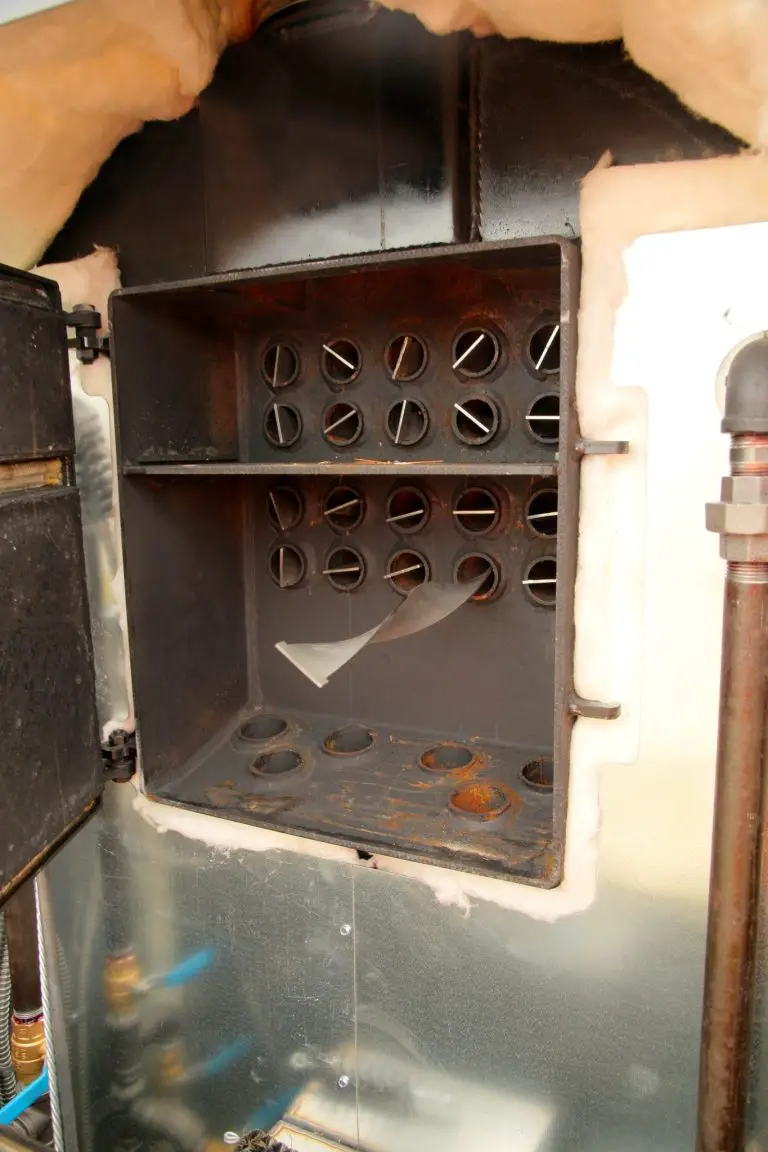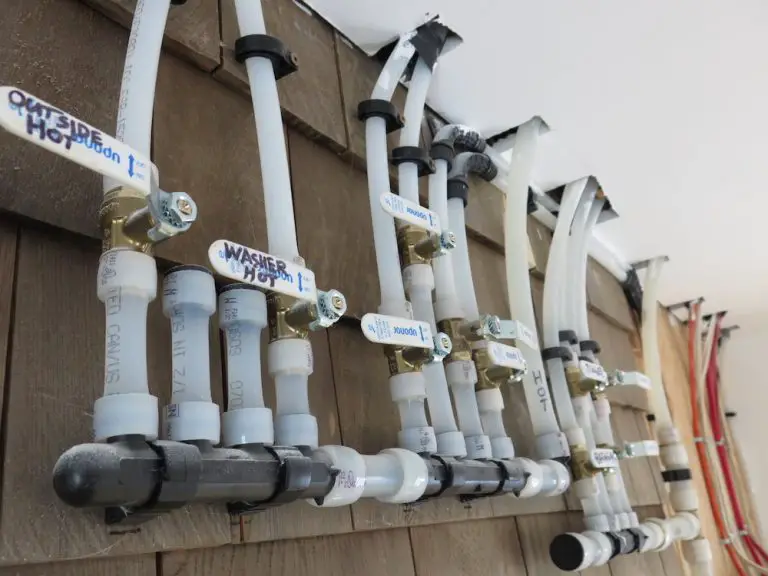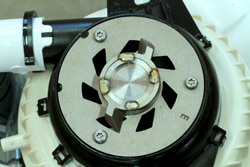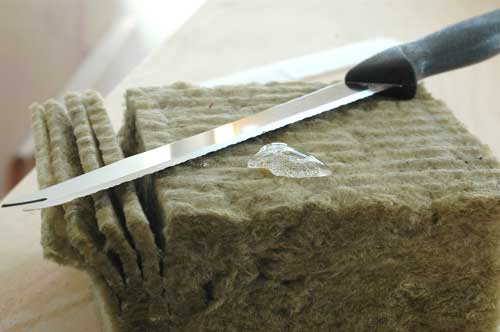
If you’re tired of the itch and dust of working with fiberglass insulation, you’ll want to hear about an alternative that’s better in every way. It doesn’t cost any more than fiberglass and it’s widely available. And my experience with this product came out of a difficult renovation situation I was involved in a number of years ago. I have no reason to recommend this stuff except that it works well,
A small attic space needed a dozen new recessed light fixtures, and that meant I had to cut access holes into the ceiling, wiggle my body into impossibly tight spaces covered by existing fiberglass insulation, then run new electrical cables before buttoning everything up again. It was the itch and airborne dust of the fiberglass I dreaded most, and my fears were completely legitimate.
As the new fixtures went in, I needed more insulation to do a neat job. That’s what prompted me to buy something other than the usual fiberglass batts to fill disturbed areas. I’d heard from contractor friends that ROCKWOOL mineral wool batts were better than fiberglass, and that made me curious enough to try it. I now know exactly what they mean.
Two Reasons to Love ROCKWOOL
Instead of being spun from molten glass, ROCKWOOL is made from spun molten basalt rock. Think of it like cotton candy, except made of minerals. ROCKWOOL batts are noticeably denser than other batts and less prone to releasing fibers into the air. In fact, you can take a piece of ROCKWOOL, rip it apart with your hands in strong sunlight and almost nothing can be seen floating around in the air. With very few loose fibers falling off, there’s also nothing to irritate your skin, either. The firm consistency of ROCKWOOL means it slices precisely and is easy to fit accurately into existing spaces without sagging — a perennial problem with other fiber-based batts.
ROCKWOOL is made by heating basalt rock and slag until it’s liquid, then spinning the material into thin fibers as it cools and solidifies. The process reminds me of how they make cotton candy, though the basalt version has characteristics that the sweet pink stuff on a stick does not.
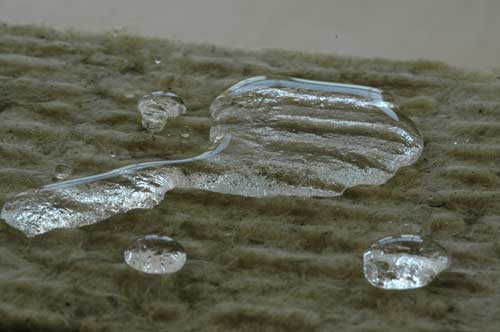
In tests I completed in my shop, ROCKWOOL proved to be surprisingly water repellent. You can pour water right on top and it simply beads up and rolls away, as you can see above. Sure, you can get this stuff to absorb water, but you have to work pretty hard at it. The whole issue of water absorbency matters when it comes to insulation because sometimes roofs leak. And when water lands on traditional, fiber-based insulation, it simply goes soggy and collapses under its own weight, losing most insulating properties in the process while also spawning mold growth.
Greater batt density offers other ROCKWOOL advantages, too. It reduces the movement of air through the insulation, boosting energy performance in situations where a building envelope might not be completely sealed. Reduced air movement through fibers also reduces the tendency for condensation to build up within batts during cold winter weather.
As it turns out, the best tool for slicing ROCKWOOL is not a utility knife. A serrated bread knife works better. The extra density and firmness of the product is why. You can easily measure and cut accurately to within less than a quarter of an inch, making for precise installations that permit no air leakage around batt edges. Think of the knife more like a saw and you’ll get the picture.
You’d think that all these advantages would have to come at a higher cost, but not necessarily so. Comparing prices of ROCKWOOL and fiberglass with equal R values, relative costs per square foot are slightly more or slightly less for each type, depending on market conditions. For most jobs, price differences are so small they don’t matter nearly as much as a more pleasant working experience, a better installation and superior energy performance.










